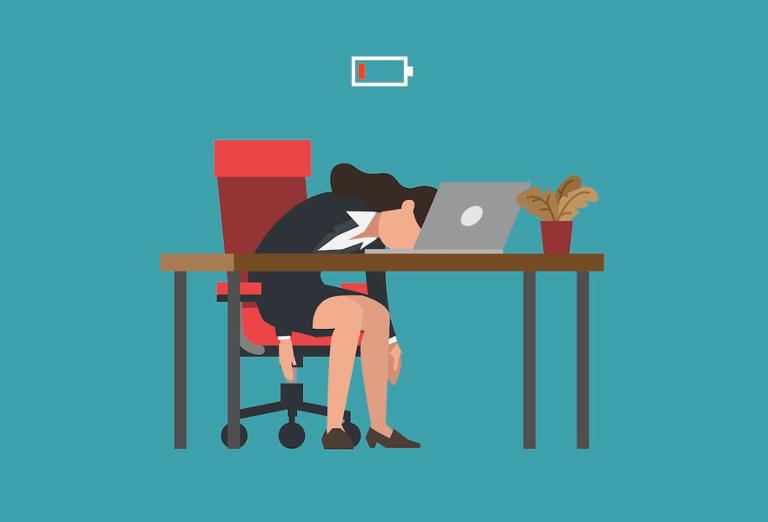By this point, millions of technologists have been working from home for six months or more. Many have figured out remote schedules that allow them to effectively balance work and life, while teams have adopted workflows that compensate for a lack of in-office contact. However, the specter of burnout remains.
This summer, Dice’s Sentiment Survey revealed that, for a fairly significant percentage of technologists, workloads had increased as a result of the COVID-19 pandemic. In some cases, those workloads had virtually doubled. At around the same time, data from Blind, which anonymously surveys tech-industry employees, showed that 36 percent of technologists felt obligated to reply to work emails, no matter what the time of day.
By July, some 73 percent of technologists told Blind that they were feeling burnt-out, up from 61 percent in February. And with more businesses moving to a remote-only model for their employees (following the lead of companies such as Facebook), it’s clear that technologists may have to take steps to avoid frying mentally after too many months of hardcore work at their home offices or kitchen counters. What can they do?
Set Your Schedule
Sure, you might have hated your old commute to the office. In major tech hubs such as the Bay Area, it isn’t uncommon for technologists to sit in traffic for an hour or two (or more!) every day. Even in smaller communities, the daily grind of traveling between office and home is something to be endured when traffic’s normal.
But physical commuting has one advantage: It helps clearly delineate your home and work life. When you’re working from home, such boundaries are obviously erased; there’s nothing stopping you from debugging code or answering emails from early in the morning until late into the night without a break. Pair that with the increasing workload for many technologists, and it’s a recipe for burnout.
Fortunately, there’s a straightforward solution: Make your “operational hours” clear to your team and company, especially if you’re working in a different time-zone from the rest of your team. By clearly setting when you’re available—perhaps even by marking out the times on a group calendar—you’ll (hopefully) be able to constrain the bulk of your workday activity to standard workday hours.
That will only work, however, if you make a point of stepping away from your laptop and phone when you’re not “on the clock.” Although it’s hard to resist the urge to check your email and messaging apps for any late-breaking issues, you’ll have to do so if you want to truly regain some much-needed equilibrium.
Negotiate Your Workload
During the initial stages of the pandemic, companies rushed to radically retool their operations to meet a rapidly changing world. For example, sysadmins and other technologists who mind internal tech stacks needed to scramble to get everyone set up for remote working. Web app developers, website designers, and others who build customer-facing products needed to quickly adjust e-commerce portals to handle a flood of traffic.
Given those pressures, it was inevitable that many remote technologists would see their workloads and working hours double. Now, fortunately, many teams have established a rhythm to working from home, and managers have a better sense of long-term requirements.
If you still feel overloaded despite settling into remote work, it’s time to have a friendly conversation with your manager about how to adjust your schedule. After all, it’s not in the company’s interest to burn you out; whether it’s extending deadlines or shifting some tasks onto other team members, chances are good that they’ll be able to accommodate you.
Engage!
It’s very easy to become isolated when you’re working from home. Even the world’s biggest introvert likes occasional interaction with their teammates. While some companies have recognized the growing problem of isolation, and attempted to solve it by scheduling remote team lunches and other get-togethers, others have overlooked it. In any case, it’s important that you put in some “face time” with your colleagues, especially if you have a job that doesn’t demand a lot of video meetings and calls.
While everyone’s time is precious, scheduling a quick check-in with colleagues and teams is something that a majority of folks will welcome—after all, they’re probably feeling as isolated as you. Make sure to focus on how everyone’s doing, and listen to their concerns. You could also share updates on hobbies, interesting things you’ve seen on the web, or whatever else might have caught your collective fancy. If you’re feeling fried, some friendly chat-time could make you feel better.
Sleep and Exercise
Two big keys to reasserting a healthy work-life balance and avoiding burnout: A solid sleep schedule and regular exercise. Make a point to get up from your desk on a regular basis, even if you only take a walk around the block; it sounds simple, but it’s an effective way to maintain your mental health, especially if your day has been particularly aggravating.



